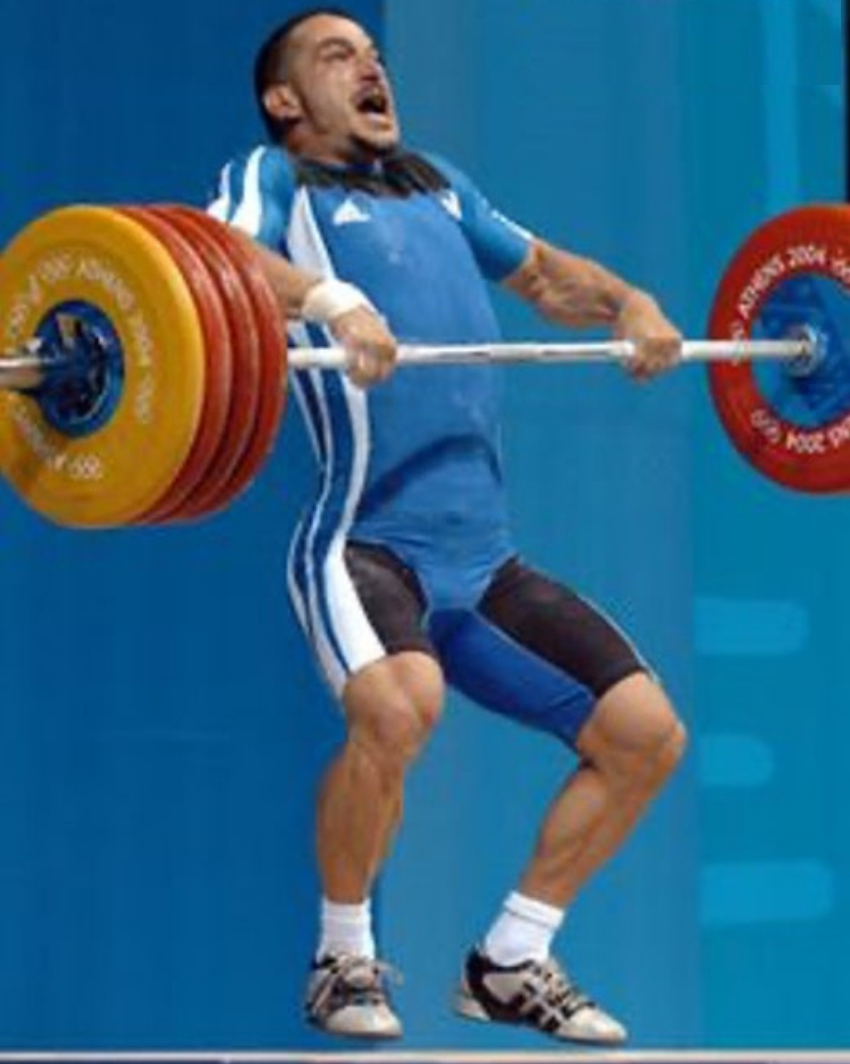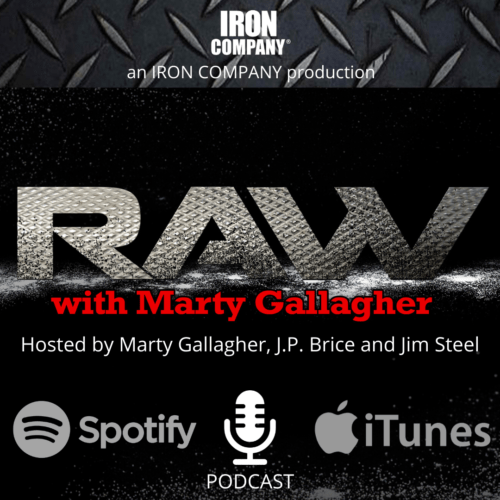
Progressive Pulls: 2022
We’re smarter than when we first wrote it
Olympic Weightlifter Pyrros Dimas (above) in flight: this is how to do the power clean, bar pulled to pec height, note feet are off the platform
When the pandemic closed commercial gyms nationwide, I received a lot of phone calls from trainees seeking alternative ways to train when deprived of all the progressive resistance training tools they took for granted like barbells, dumbbells and kettlebells. One Californian, an intermediate level fellow, called me for advice.
“How can I possibly get a good back workout without access to strength training equipment like a lat pulldown machine, no dumbbells, no T-bar row or pullover machines?! My entire back workout used machines, devices, tools, and cables. All I have now is an Olympic barbell in my garage sitting on a concrete floor.”
“Losing access to a commercial gym will be the best thing that ever happened insofar as your back development.”
“What?!” he was flummoxed; he had come looking for consolation. “Do you understand?!” he said, irate, “The gym is freaking closed. How can I get any kind of a decent back workout?!”
“That barbell lying on your garage floor is all you need to obtain the best back workout of your life.”
It was then that I outlined for him Progressive Pulls, a back-breaking, ball-busting, back routine; eight exercises done in a single session. Every exercise using the barbell sitting on a floor, needing nothing else. The Progressive Pulls routine and strategy is based on an ancient article written by an iron icon.
The Progressive Pull routine was first described in an article penned by Tommy Suggs in a 1966 issue of Strength & Health magazine, Suggs, an elite, nationally ranked Olympic weightlifter, outlined an “all pull” strategy that started with the lightest exercise using the lightest possible poundage that then works through a succession of upward pulling exercises. By sessions end, every muscle on the back is decimated: traps, erectors, upper and lower latissimus dorsi, and rear deltoids.
Progressive pulls (with one exception) are all about pulling a barbell upward to various heights, lightest to heaviest, longest to shortest. 30 years after Suggs documented the strategy, I updated the concept and expanded the exercise menu a bit, while holding true to the core concept. That was in 2000, now 21 years later, I am smarter then when I wrote the year 2000 article. I would like to add further refinements to this classical concept, a back-building/strength-infusing method that is too effective and efficient to let die of neglect.
What is the best use of a barbell sitting on the floor? With zero gym equipment, i.e., no weight benches, no squat racks, no nothing, you can get the greatest back workout of your life. Progressive pulling improves both performance and physique. The first exercise, the overhead squat, is not a Progressive Pull, it is a warm-up, a highly specific warm-up done to warm the shoulder girdle prior to snatches and cleans. The remaining seven exercises are pulling movements pulled to differing heights. Make haste slowly.
Progressive Pull Menu
- Overhead squat: the lightest exercise, the overhead squat, uses a snatch grip. Start with a broomstick or PCV pipe. Ultra-light, ultra-deep squats are done holding a bar, stick or pipe overhead. Get loose and warm using the overhead squat, 2-3 sets. Improves shoulder flexibility, balance, and warms up the entire body. It will take many sessions before the shoulders are loose enough to handle the empty 45-pound bar.
- Power snatch: using a wide grip, pull a light weight from the floor to completely overhead in one motion. Dip the knees to catch the weight at arms-length. The whole game is velocity and explosiveness. Limit reps to no more than three. Make small jumps. When the explosiveness fades on the 3rd rep of a set, curtail the power snatch and move onto the power clean.
- Power clean: narrow the grip to shoulder width. Pull the bar explosively to pec height and rack it on the shoulders. 2-3 rep sets done with velocity. Do not rip or jerk the bar off the floor: break the barbell from the floor slowly, then accelerate to maximum velocity. Go up on the toes before dipping in the knees to rack the weight on the shoulders. When velocity on the 3rd rep slows, you are done; onto hi-pulls.
- High pull: add poundage to the power clean bar and commence with high pulls. A hi-pull is tugged to belly-button height. Again, 3-rep sets and again, velocity is requisite. Despite being heavy, a high pull should never be made so heavy that it becomes a slow, extended deadlift: make small weight jumps, pull three rep sets until the 3rd rep on a set stalls. You are done. Time to deadlift.
- Deadlift: add weight to the high pull bar and commence your first set of deadlifts. 3-rep sets are performed, sumo or conventional are both acceptable. Establish crisp technique on the lighter sets. 20-30-pound weight jumps per set, no more. Do not let technique disintegrate as reps should be technically crisp in this heaviest exercise on the PP menu. When technique breaks down on a 3rd rep, quit. The deadlift is poundage apogee, we start peeling weight plates off the deadlift bar and continue to lift….
- Heaves: the deadlift bar is now sitting fully loaded. As we unload it, why not hit a few more sets, to ensure hypertrophy and complete back decimation. Strip 20% off the deadlift poundage. A heave is an extended deadlift. At this point in the session, you will have no more explosiveness, but you can still ‘heave’ the barbell to belly-button height. A single three rep set is all that is required.
- Bent over row: strip another 30% off the barbell and perform one set to failure in the strict barbell bent over row. A strict row requires the torso be held parallel to the floor. Do not dip and heave to start the row rep and do not lower the chest to meet the barbell. The torso is absolutely frozen from the start of the first rep until the end of the set. Make the mind-muscle connection: do not ‘arm pull’ rows, make the lats work.
- “Kirk” Shrug: the final exercise in the Progressive Pull sequence is called the Kirk Shrug after Kirk Karwoski, the powerlifting superstar that popularized it. Use whatever poundage that was used on the strict bent-over row. Stand erect with the weight, to the finished position of a deadlift using a double overhand grip. Start shrugging. Try and touch the ears with the shoulders on every rep.
Straps: I advise using lifting straps. I want to eliminate the grip as the limiting factor. The muscles of the back are able to keep repping after the loss of grip forces the curtailment of the set. The sheer volume of poundage pulled in a Progressive Pull workout is staggering. I get a lot of grief for my advocacy of lifting straps. The usual retort being, “I want to build my grip.” My retort? I want to build my back and I want those extra growth-producing reps straps enable.
Hypothetical Progressive Pull routine for a Man with a 315 x 1 deadlift
Overhead squat, snatch width grip, broomstick or PCV pipe 2 sets of 6-8, increase depth each rep
Overhead squat, 45-pound empty bar, 5-reps
Power snatch: 65x3, 85x3, 105x3, 115x3, 135x2 (3rd rep slowed)
Power clean: 155x3, 175x2 (3rd rep slowed)
High pull: 205x3, 225x3, 245x2 (2nd rep slowed)
Deadlift: 275x3, 295x3
Heave: 255x3
Row: 185x6
Kirk shrug: 185x11
Immediately after training, drink a replenishment shake. I drink a double serving of John Parrillo’s 50-50 Plus mixed with whole raw milk. This anabolic atomic bomb delivers 70 grams of high BV protein, 100 glycogen-replacing carbohydrates, 45 grams of the highest quality organic fat from the whole milk, some lactose sugar in the milk spikes insulin – not crazily – enough to reap the anabolic effects of a perfectly timed post-workout insulin burst.
Optimally, I would suggest you then head to an all-you-can-eat buffet. Or head home and grill a big steak, a perfect cheeseburger, a magnificent chunk of fish or a perfectly roasted chicken, plus vegetables galore, it is your duty to stuff your freaking face.
Then take a power nap. Fall into effortless, deep, dreamless REM sleep. The power nap completes the growth cycle: slaughter the target muscle(s.) Post workout feed the body amply as this triggers supercompression. Then stuff the blasted muscles full of what has just been depleted. Post-workout supercompensation is optimally followed by some sort of narcoleptic interlude: an uninterrupted power nap completes the growth cycle. Train the muscle, feed the muscle, rest the muscle, grow the muscle.
Hit progressive pulls once a week: place them at the opposite end of training week with once-weekly leg training. Please heed this advice: jump in using low poundage. While you could and are tempted to start with higher weights, based on current strength levels. There is a cumulative effect, a deep fatigue, that this volume of high intensity training inflicts.
Best start modestly: jump in well below capacity, honed technique with these initial ultra-light session. Progressive Pulls don’t really get serious till around the 3rd week into a serious Progressive Pull 10-week cycle. Use the first weeks to establish pristine techniques. You won’t survive if you under-eat or under-rest. This is how the Big Boys train.
About the Author - Marty Gallagher
As an athlete Marty Gallagher is a national and world champion in Olympic lifting and powerlifting. He was a world champion team coach in 1991 and coached Black's Gym to five national team titles. He's also coached some of the strongest men on the planet including Kirk Karwoski when he completed his world record 1,003 lb. squat. Today he teaches the US Secret Service and Tier 1 Spec Ops on how to maximize their strength in minimal time. As a writer since 1978 he’s written for Powerlifting USA, Milo, Flex Magazine, Muscle & Fitness, Prime Fitness, Washington Post, Dragon Door and now IRON COMPANY. He’s also the author of multiple books including Purposeful Primitive, Strong Medicine, Ed Coan’s book “Coan, The Man, the Myth, the Method" and numerous others. Read the Marty Gallagher Biography for a more in depth look at his credentials as an athlete, coach and writer.



